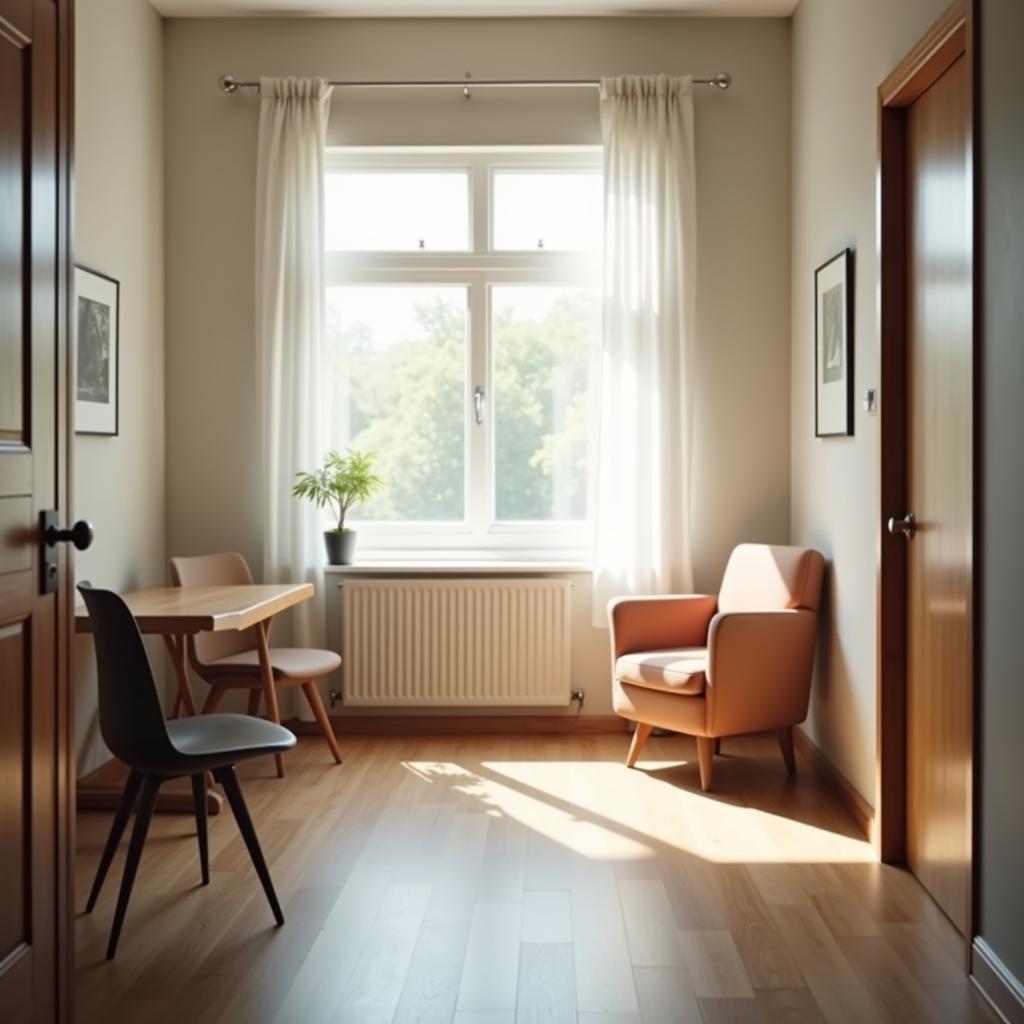A Mental Hospital Quiet Room offers a safe, calming space for individuals experiencing emotional or psychological distress. It’s a vital resource in mental health care, designed to provide temporary respite and support during challenging moments. quiet room mental hospital Let’s delve deeper into its purpose, benefits, and usage within a therapeutic setting.
The Purpose of a Quiet Room in a Mental Health Facility
Quiet rooms are designed to de-escalate crises and provide a therapeutic environment for individuals struggling with overwhelming emotions. They’re not meant as punishment, but rather as a supportive intervention. These rooms offer a controlled environment where patients can regain emotional control and composure. The primary goal is to prevent self-harm or harm to others while fostering a sense of calm.
A quiet room often contains minimal furniture, typically a comfortable chair or mattress, and is designed to be sensory-depriving, reducing external stimuli that could exacerbate anxiety or distress. The quiet atmosphere helps individuals focus on their internal state and develop coping mechanisms.
 Mental Health Quiet Room Design
Mental Health Quiet Room Design
What are the Benefits of a Mental Hospital Quiet Room?
One key benefit of a quiet room is the opportunity for self-reflection and de-escalation. Away from the potentially triggering environment of a general ward, individuals can process their emotions and develop coping strategies. This time alone can be crucial for reducing anxiety and promoting a sense of self-awareness. Another advantage is enhanced safety for both the individual and others. During periods of intense distress, there’s a risk of impulsive behavior. The quiet room provides a secure space, minimizing the potential for harm.
Quiet rooms can also be instrumental in promoting relaxation and reducing sensory overload. The controlled environment minimizes external stimuli, allowing individuals to regain a sense of calm. This can be particularly helpful for those experiencing psychosis or mania. Moreover, quiet rooms provide an opportunity for individuals to practice self-soothing techniques. Whether it’s deep breathing, mindfulness exercises, or other relaxation methods, the quiet environment facilitates the development of essential coping skills.
Who Uses a Quiet Room and When?
Quiet rooms are typically utilized by individuals experiencing acute emotional or behavioral distress. This can include patients struggling with anxiety, panic attacks, psychosis, mania, or intense anger. The use of a quiet room is determined by trained mental health professionals who assess the individual’s needs and determine the appropriateness of this intervention.
What is the typical duration of stay in a quiet room?
The length of stay varies depending on the individual’s needs and the specific situation. It can range from a few minutes to several hours, with regular monitoring by staff to ensure safety and well-being. hospital phones are often available for communication with staff. The goal is to provide support and allow the individual to regain control as quickly as possible.
How is a quiet room different from seclusion?
While both involve a separate space, a quiet room is distinct from seclusion. Seclusion is a more restrictive intervention used in extreme cases where there is an imminent risk of serious harm. Quiet rooms, on the other hand, are designed to be therapeutic and supportive, focusing on de-escalation and emotional regulation.
Creating a Healing Environment in the Quiet Room
The design and atmosphere of a quiet room play a significant role in its effectiveness. Soft lighting, comfortable furnishings, and a calming color palette can contribute to a sense of peace and tranquility. dreaming about a hospital can sometimes be a manifestation of underlying anxieties, and a quiet room can offer a sense of security and support. Minimizing external stimuli, such as noise and bright lights, is crucial for reducing sensory overload.
Conclusion: The Role of the Mental Hospital Quiet Room in Recovery
The mental hospital quiet room is a valuable tool in mental health care, providing a safe and supportive environment for individuals experiencing distress. By offering a space for self-reflection, de-escalation, and emotional regulation, quiet rooms contribute to the overall healing process. Understanding the purpose and benefits of this intervention is essential for both patients and their families. Remember, finding a playroom hospital or sending flowers to a hospital can be a way to offer comfort and support. For effective crisis management, the quiet room plays a crucial role.
When support is needed, please contact us: Phone: 02437655121, Email: [email protected], or visit us at 298 Cau Dien St., Minh Khai, Bac Tu Liem, Hanoi, Vietnam. Our team is available 24/7.